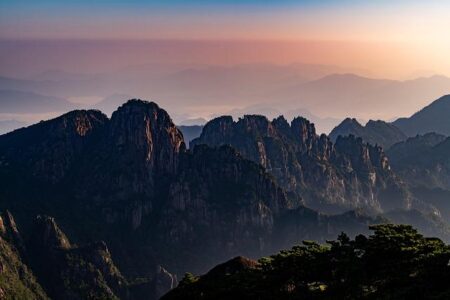Former President Donald Trump has highlighted the United States’ continued reliance on China for rare earth minerals, emphasizing the strategic challenges this dependence poses. In a recent statement, Trump also announced that tariffs on Chinese goods will reach a total of 55%, marking a significant escalation in trade tensions between the two economic powers. This development underscores ongoing concerns about supply chain security and trade imbalances amid a complex geopolitical landscape.
Trump Highlights US Reliance on Chinese Rare Earth Minerals Amid Rising Trade Tensions
Former President Trump recently underscored America’s critical dependence on Chinese sources for rare earth minerals, a key component in various high-tech and defense applications. Highlighting this reliance, he stressed that the nation’s supply chain vulnerabilities could have significant implications amid escalating trade conflicts. Trump pointed out that despite ongoing efforts to diversify sources domestically and internationally, China remains the predominant supplier, controlling an estimated over 80% of the global rare earth market.
In conjunction with this revelation, Trump confirmed that tariffs on Chinese imports would culminate at a total average rate of 55%. These tariffs are part of a broader strategy to counterbalance trade imbalances and protect American industries but also carry the risk of intensifying friction between the two economic powers. The following table summarizes the key figures related to the rare earth mineral supply and tariff rates:
| Category | Details |
|---|---|
| Rare Earth Mineral Dependency | Over 80% sourced from China |
| Tariff Rate on Chinese Goods | 55% (average) |
| Primary Impacted Sectors | Technology, Defense, Renewable Energy |
| US Diversification Efforts | Ongoing but limited success |
- Trade policy implications: Higher tariffs could trigger retaliation and disrupt industries dependent on rare earth minerals.
- Supply chain challenges: America’s lack of domestic alternative sources underscores national security concerns.
- Geopolitical tensions: The dynamic between the US and China continues to influence economic and strategic decisions globally.
Experts Analyze Economic Impacts of Elevated Tariffs on Chinese Imports
Industry experts warn that an increase in tariffs to 55% on Chinese imports, as highlighted by recent statements from former President Trump, could significantly disrupt supply chains and raise production costs across multiple sectors in the United States. The rare earth minerals, crucial for manufacturing electronics, renewable energy technologies, and defense equipment, are predominantly sourced from China, making the U.S. vulnerable to supply shortages. Analysts argue that while these tariffs aim to protect domestic industries, they may inadvertently lead to higher consumer prices and inflationary pressures in the short term.
Economic forecasts suggest a complex landscape ahead, with some businesses pivoting to alternative suppliers while others may face operational slowdowns. The table below summarizes potential impacts by key sectors:
| Sector | Potential Impact | Strategic Response |
|---|---|---|
| Electronics | Increased costs & supply delays | Diversify sourcing & invest in local mining |
| Renewable Energy | Project slowdowns due to material scarcity | Accelerate recycling & alternative tech |
| Defense | Risk to critical component availability | Boost domestic rare earth production |
- Short-term: Rising prices for electronics and energy products.
- Medium-term: Industry shifts in supply chain geography.
- Long-term: Potential reshoring of rare earth mineral extraction and processing.
Policy Recommendations for Strengthening US Supply Chains and Reducing Dependency on China
To reduce America’s vulnerability to China’s dominance in rare earth minerals and other critical goods, policymakers should prioritize diversifying supply chains through strategic partnerships with allied nations and incentivizing domestic production. Encouraging investment in mining and processing facilities within the United States can lessen dependence on imports. Additionally, the government could establish tax credits and grants designed specifically for companies engaged in reshoring manufacturing and adopting advanced technologies that increase resource efficiency.
Efforts to strengthen resilience must also embrace a multi-layered approach that includes:
- Strategic stockpiling of rare earth minerals to buffer against supply disruptions.
- Supporting R&D initiatives for alternative materials to reduce the need for scarce resources.
- Expanding trade collaborations beyond China, focusing on sustainable and ethical sourcing.
| Policy Measure | Expected Impact | ||||||||||
|---|---|---|---|---|---|---|---|---|---|---|---|
| Domestic Mining Incentives | Increased supply chain control | ||||||||||
| Strategic Stockpiling | Mitigated short-term disruptions | ||||||||||
| International Partnerships | Diversified import sources | ||||||||||
| Investment in R&D |
To reduce America’s vulnerability to China’s dominance in rare earth minerals and other critical goods, policymakers should prioritize diversifying supply chains through strategic partnerships with allied nations and incentivizing domestic production. Encouraging investment in mining and processing facilities within the United States can lessen dependence on imports. Additionally, the government could establish tax credits and grants designed specifically for companies engaged in reshoring manufacturing and adopting advanced technologies that increase resource efficiency. Efforts to strengthen resilience must also embrace a multi-layered approach that includes:
|




